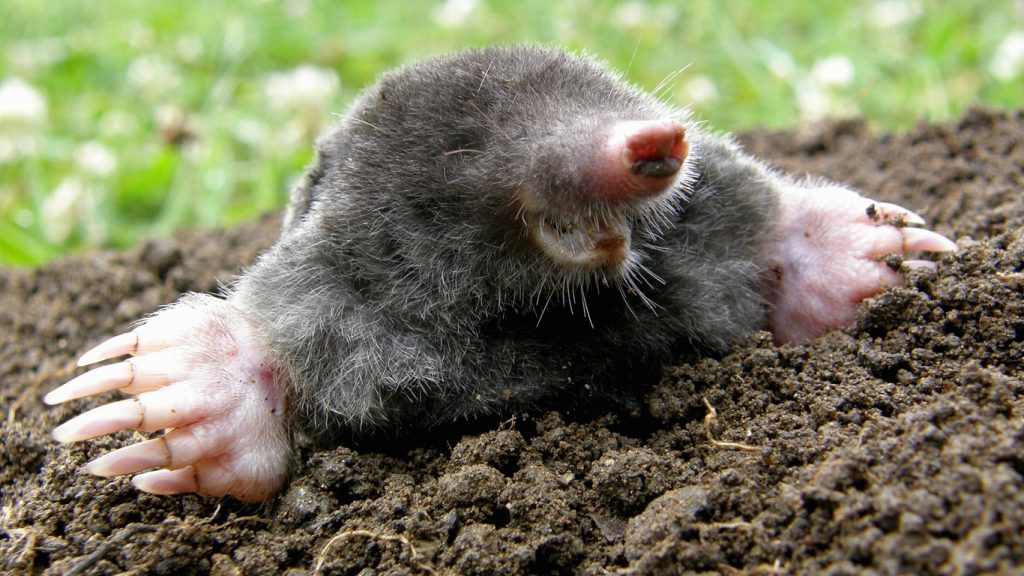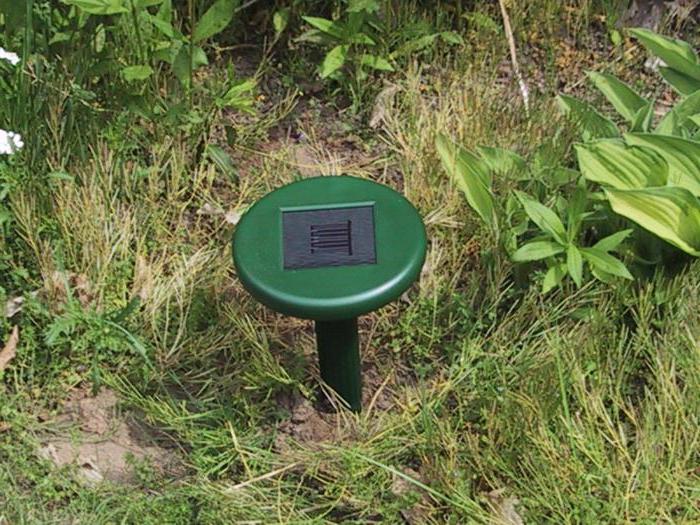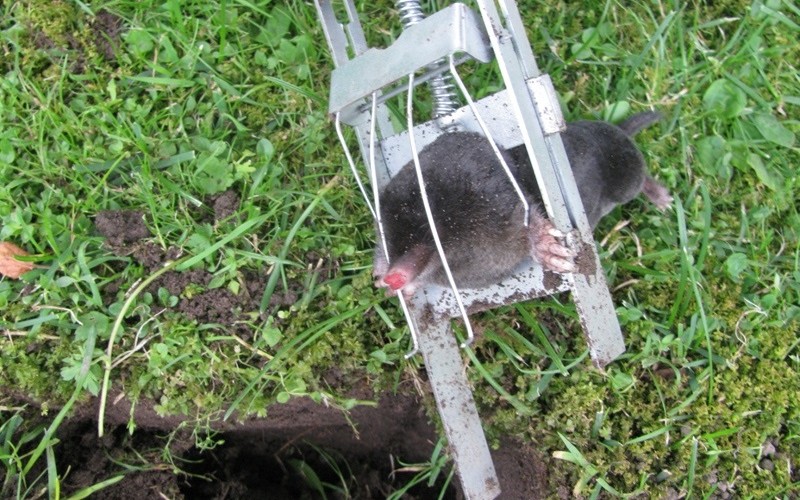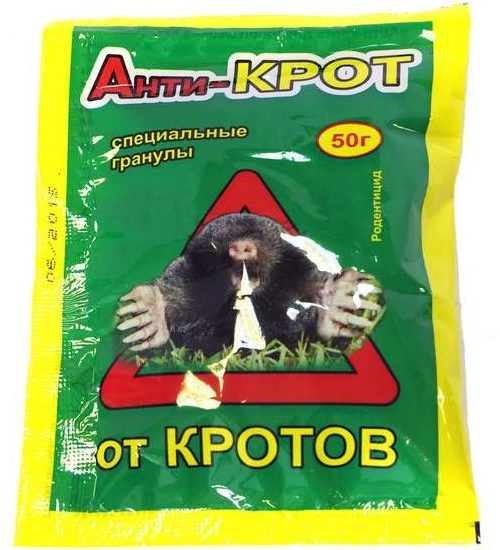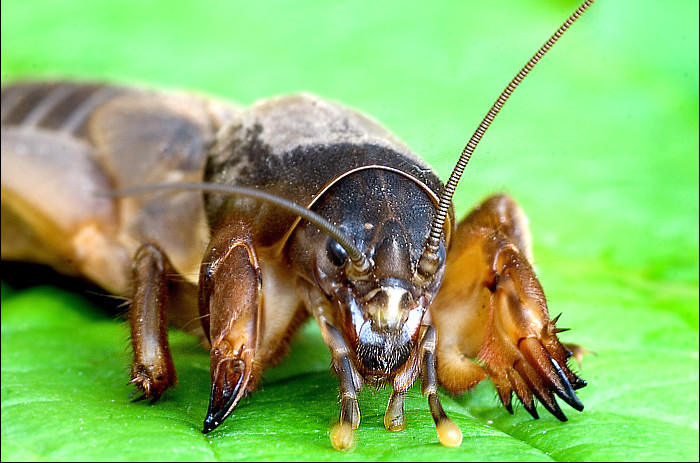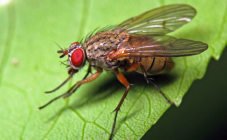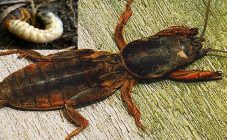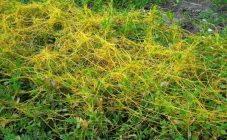Content:
The mole can dig up the entire backyard territory. Usually, not the animal itself is noticed first, but the results of its activities. Firstly, these are the hummocks of the earth in the beds, the so-called molehills. Secondly, the collapsed land from the passages, which spoils the aesthetic appearance of the site as a whole.
Who are moles and what harm do they bring
Mole body length - up to 15 cm, weight - up to 150 g. Sometimes they can be confused with a shrew. All mole life and food are held underground. They quickly dig passages to store food and can live at a depth of two meters. They eat a lot, without food they can live no more than 20 hours. They prefer loose dry soil for life.
Mole burrows bring unequivocal harm to plants in the garden: the animal exposes the roots of plants, after which they cannot normally receive water and vital substances from the soil. When creating a passage for themselves, these rodents throw out all the unfertile dry soil to the surface. They also eat earthworms, which are necessary to improve the quality of the land. Like many rodents, they can become carriers of parasites and infections. There is a misconception that moles eat up plant roots. However, this is not true, because they are completely carnivores.
How to deal with moles
To defeat the mole, you can use various folk remedies. All the main means of scaring away the unfortunate animal in the country are aimed at irritating the main sensory organs and needs of the animal:
- hunger;
- hearing;
- sense of smell.
A measure aimed at irritating hunger is to deprive of food. Moles need to eat frequently. If they starve for a long time, they may even resort to cannibalism. Therefore, not finding food, the mole will lose interest in this site and leave on its own. To leave the pest without food, it is necessary to get rid of all insects and small animals, using all suitable means for killing worms, frogs and insects. However, this is not the most successful way to combat moles, because such animals are very important for the formation of the soil and the development of the future harvest. Moreover, using chemistry, there is a risk of damaging all plants in the garden.
Acoustic methods consist of creating and installing special repellents that can be purchased at any gardening store. Such devices can also be made independently from scrap materials. Such repellents affect the hearing of moles with certain sounds that scare them and force them to leave the site.
Methods that target an animal's sense of smell include the use of strong-smelling substances such as kerosene, birch tar, naphthalene, or castor oil.
There are also repellent plants that scare away the underground animal. They should be planted in the mole's vital area.
Many summer residents wonder whether it is possible to poison moles like mice and rats. It won't be that easy. The fact is that these animals are completely carnivorous, they are used to hunt so that the victim is constantly in motion. Therefore, the poisoned food trick may not work.
To destroy moles, you can resort to the help of hunters. Pets are great for this. The most effective mole fighters are the Dachshund.
Pest control with poison gas launched into tunnels is rarely successful. Moles can have a very developed, branched system of tunnels. The animal, sensing gas in its possession, will simply stop using part of the tunnels and start digging a new path. At this time, all the gas will be absorbed into the plants through the roots and the crop will no longer be suitable for consumption.
There are mechanical methods of struggle aimed at catching and destroying moles. Mole traps are used to catch animals. This method is effective in the presence of a small number of moles on the site. Mole traps are purchased in any garden supply store. The tunnel mole trap is famous among gardeners. It looks like a plastic pipe with traps at both ends. To catch a mole, you need to get used to setting the trap so that it is as invisible to the animal as possible.
Scarers: how they look and act
Scarers can be:
- purchased;
- homemade.
A commercially available electric repeller is a powerful and effective remedy not only against moles, but also against other types of rodents. The device generates sound vibrations at a low frequency, creating noise that is very unpleasant for the subtle hearing of rodents. It means danger to them, makes them quickly leave the territory of the vegetable garden or garden. Some of the most famous electric scarers: "Mole", "Mole", "Crotogon".
Self-made scarers are created for the same purpose from scrap materials. Some gardeners bury empty glass bottles with the cap open at an angle of 45 ° into the ground along the path of the tunnels. In the wind, the bottle begins to whistle, the glass sends it in the form of vibration to the ground.
Some set iron rods in the ground and put empty cans on them. However, this method is dangerous for the owner himself and is not as effective as the previous ones.
There are clearly more advantages of purchased ultrasonic scarers and positive feedback from gardeners on the forums than homemade ones. The sound emitted by them does not disturb human hearing, the device itself looks aesthetically pleasing and can help in the fight against rodents for several years. However, there were times when such a repeller helped in one area and did not work at all in another. Or the moles disappeared at first, but then reappeared, and the sound did not scare them away. Therefore, the purchase of such a device should be treated responsibly and be aware of the risk that it may not help.
Traps: mechanism and action
Experienced owners know perfectly well how to deal with moles at their summer cottage. Traps are the most inhumane method of dealing with moles. Many traps kill or maim an animal.
There are the following types of traps:
- wire;
- crushers;
- tunnel;
- harpoon;
- scissor trap;
- more complex devices.
Types of traps differ in their design, method of operation, but in general they have one result: the direct destruction of the animal.
Wire traps and crushers are installed at the entrance to the tunnels, and tunnel, harpoon and scissor traps are installed directly into the animal's tunnel and covered with an opaque container: a bucket or a saucepan.
There are subtleties of installing each type of trap. So, a wire trap is triggered when a mole tries to move the gatehouse. The mechanism slams shut, pressing down the head of the beast. Mole crushers are usually bought, as for rats, but they are redesigned: the gatehouse is being finalized to be triggered by a push. It is installed so that the upper vault does not touch anything, otherwise the trap will not work. A tunnel trap causes more problems with installation and costs an order of magnitude more expensive than crushers and wire traps, in action it is similar to a wire trap. The harpoon trap, when the gate is triggered, pierces the animal in the tunnel with its tips, and the scissor trap squeezes it like forceps.
Poisons and Poisons: How to Cook and Arrange
You can make a poison for a mole with your own hands. It usually includes: boiled grain, pesticide, poison. All ingredients are mixed together. The mixture is buried throughout the habitat of the underground parasite and, in particular, at the entrances to burrows to a depth of 15-25 cm. After 2 weeks, the procedure is repeated.
There is also a method of poisoning, in which poison is introduced onto chopped earthworms and fed to hated animals.
When buying a ready-made poison or preparing it yourself, it is worth remembering not to harm the plants on your own backyard land.
Repellent plants for moles
Mole repellent plants are:
- garlic;
- beans;
- black beans;
- nuts;
- marigold;
- scrub;
- hazel grouses;
- daffodils.
All plants are simple and safe. These plants need to be planted everywhere and in particular at the entrance to the burrows to combat moles in the garden.
Plants such as peppermint and wormwood can be stacked in bunches at the entrances to tunnels - their smell scares off moles.
Wind turbines: how they look and work
The windmill is a mole repellent. You can buy it in the store or make it yourself.
At home, wind turbines are made from 1.5 liter plastic bottles. The appearance of the device can vary in detail, depending on the imagination and ingenuity of the gardener, but the design is about the same everywhere. The device looks like a weather vane, the blades of which are made from the cavity of the bottle. It is set vertically on a base, a metal pipe buried in the ground at a level below the level of the mole's burrows.
Such a device can operate in different wind directions. When the wind blows, the windmill begins to crackle disgustingly, the sound through a metal pipe goes into the ground and irritates the moles.
What can be done to prevent the appearance of moles
If a garden or vegetable garden can theoretically be attacked by moles, you need to protect yourself in advance. For this, a mesh with small cells made of metal material or polycarbonate is taken. The mesh is dug in along the perimeter of the site to a depth of two meters. And the upper part is attached to the fence.
There is also a horizontal protection - a net for lawns. It should be installed where there are no broken beds or flower beds, it is placed on the surface of the earth with an indent of 10 cm. Thus, when the mole digs a tunnel, it will stumble upon an obstacle and turn around. This method is quite effective, but costly, both physically and financially.
Thus, moles can be dealt with by a variety of methods and the gardener can only choose the most suitable one.
